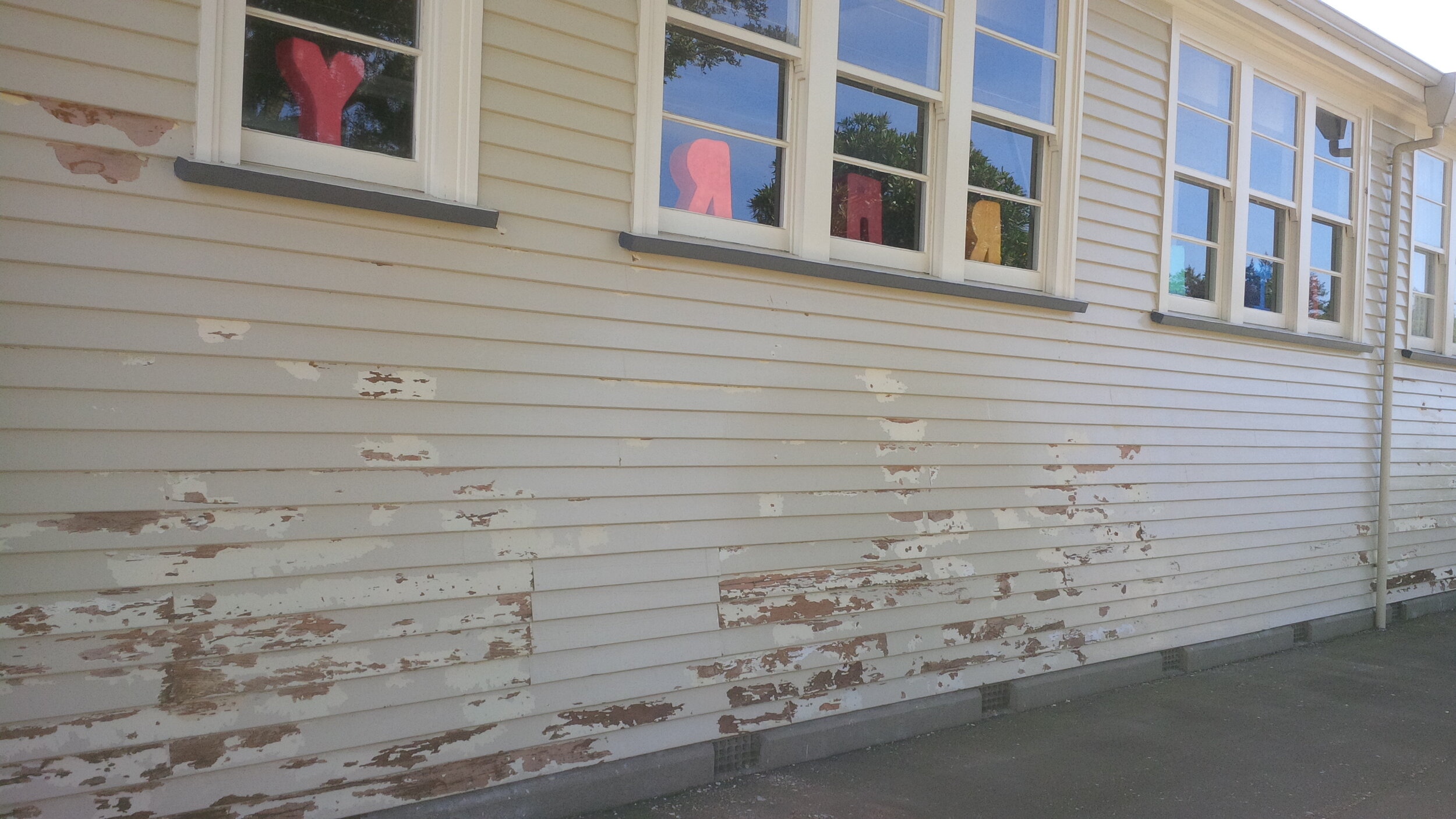Could you be at risk from old lead paint at your school?
Could you be at risk from old lead paint at your school? (+ VIDEO)
Lead was banned in paint manufacture back in 1979 which seems like a long time ago now, so surely all that paint is gone by now? No, sorry, its not! Older buildings are often layered with many years of paint and as they are prepared properly the methods will likely expose old layers of paint from previous years.
How do you know if your school has lead coatings?
It often isn’t possible to tell lead-based paints by their appearance, but there is a simple test that can detect whether the paint is a health risk, which any reputable painter will do as part of their pre-start check. WorkSafe insists on this, although it shouldn’t need the law to dictate that people can safely get home after a day at work and school.
A simple rule of thumb is, if a building was built in the 1980s or earlier, it is best to presume that it has been painted with lead-based paint. Further information from the Ministry of Health can be found here.
How dangerous is the lead paint on my school?
First of all, lead paint on your school isn’t dangerous if it’s untouched and in sound condition. It’s once you start preparing the paint or it begins to weather off that it becomes a hazard. Flakes and dust from old lead paint can be absorbed into the body through the skin, eyes and mouth.
If lead poisoning does occur, it can start with Vague symptoms such as stomach pains, difficulty sleeping, constipation, loss of appetite, or no symptoms at all. However, Children that have no symptoms at all can still end up with brain damage if the lead is in their blood, although the likelihood of this happening is very low. If there are symptoms more severe like weakness or difficulty walking, be sure to get medical attention as soon as you can, lead can attack the nervous system and damage organs like kidneys if it is serious. Simple blood tests can be done to identify the threat.
What can be done about it?
Encapsulation is generally the preferred method, which simply means the building is maintained at a level that results in zero breakdown of the coating. The painting plan you select can be designed with this in mind, and note this assits with other issues such as asbestos and long term maintenance costs.
Total removal is another solution, which involves using specials paint stripping methods to prepare the surfaces. There are additional hazards associated with stripping, so a detailed Site Specific Safety Plan (SSSP) needs to ensure proper methods are taken to prepare the area, cordon off properly with barriers to prevent contamination and clean up checks at hold points during the job to prevent flakes from being left. Extra disposable Personal Protective Equipment (PPE) like masks, gloves and overalls for the team removing it will be required.
Containing the flakes/dust is done using a Fibre Containment System (FCS) for maximum safe containment. Preparation methods like Wet Stripping paint (not sanding) to prevent lead dust, are among many methods to prevent contamination. Each site is unique, so consult a professional for advice for your site when you are coming to repaint.
Responsibilities of trades and organisations
For a quality contractor, it should be standard procedure that paint would be tested for lead, at least on a school older than 1980s. If this isn’t being done and something occurs, WorkSafe can become involved and charges could be laid, along with the pain of having health affected.
Lead in paint is something you need to know about as an organisation, because this could have an effect on your school if neglected. Just use a trade that takes all safety precautions possible and enjoy upgrading your school!

















